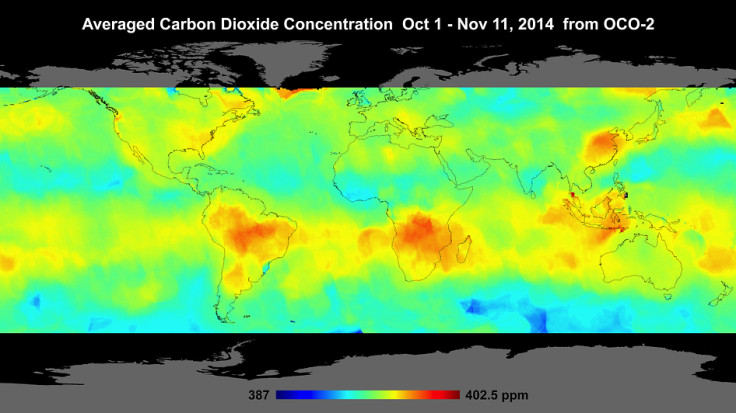Nasa satellite could help solve world's carbon dioxide problem

A Nasa surveillance probe that can monitor each country's greenhouse gas emissions is to be launched by the space agency to help control global levels of carbon dioxide and methane gas.
Elevated carbon dioxide concentrations have already been detected by the prototype of Nasa's Orbiting Carbon Observatory, OCO-2, which launched last year with the aim of studying where carbon dioxide originates from and how it circulates in the atmosphere.
Following the success of OCO-2, Nasa will launch a more powerful version called OCO-3 in order to monitor the Earth's carbon dioxide distribution as it relates to growing urban populations and changing patterns of fossil fuel combustion.
Nasa plans to launch OCO-3 in 2018, developing and assembling the satellite using materials from the development and launch of OCO-2. It will host the instrument on the International Space Station or another space-based platform.
'Promising new tool'
"Space-based carbon dioxide measurements are a promising new tool for monitoring global greenhouse gas agreements," OCO science team leader David Crisp told the Sunday Times.
"We could point this instrument at, say, Britain and get a detailed picture. We could even see the plumes of carbon dioxide rising from London and calculate its real emissions."
Crisp's team has been studying data from OCO-2 and plans to publish it in the autumn, just before a UN conference where policy makers will attempt to draw up a global agreement to cut greenhouse gas emissions.
The Orbiting Carbon Observatory could provide the information needed to check that nations honour their emission cut pledges. While these are at present not legally binding, there is no mechanism to monitor if nations are on track.
The first global maps released by OCO2 in December last year, covering 1 October through to 17 November 17, showed elevated elevated carbon dioxide concentrations in the atmosphere above northern Australia, southern Africa and eastern Brazil.
Spikes on the eastern coast of US and over China could indicate emissions from industrialisation.
Mystery of the missing carbon dioxide
As OCO-2 acquires more data, its measurements could lead to an improved understanding of the processes that add carbon dioxide to the atmosphere.
One of the main mysteries is what happens to a large proportion of the carbon dioxide released into the air each year. While around half stays in the air, the rest is thought to be absorbed by carbon sinks such as oceans and forests.
As a result, some scientists fear it could be released back into the atmosphere in the future, with potentially devastating consequences.
"The measurements we are making are politically controversial but measurements are essential to the modern world. That is why we have weather satellites and GPS navigation," Crisp told the Sunday Times.
"Now we need to extend that approach to greenhouse gases, so that we can measure not just where the emissions come from but where they are going to – and how they are going to heat up our planet."
The first Orbiting Carbon Observatory (OCO), was a Nasa mission designed to make precise, time-dependent global measurements of atmospheric carbon dioxide from an Earth orbiting satellite. It failed to reach orbit in February 2009, leading to the commencement of the OCO-2 project.
© Copyright IBTimes 2025. All rights reserved.





















